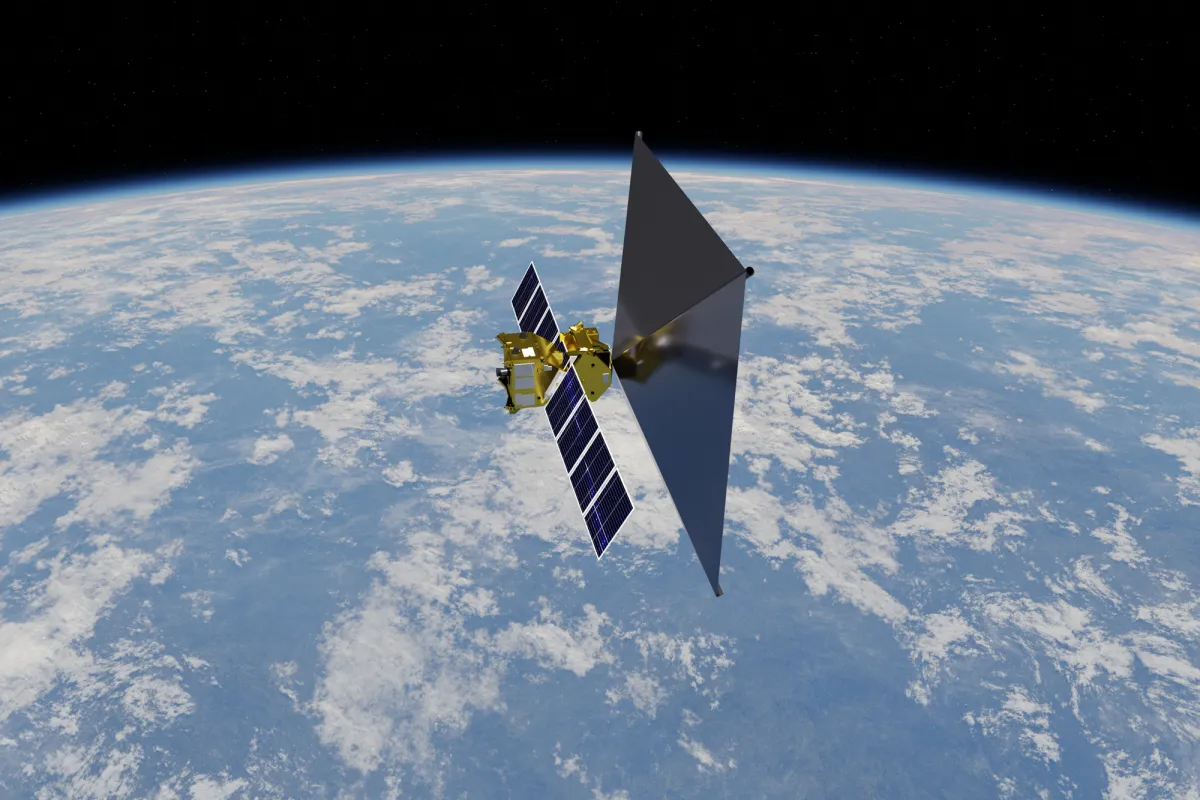A group of European companies have received funding from the European Space Agency (ESA) to test a drag sail.

More and more satellites rely on onboard propulsion to prevent space debris from clogging near-Earth space. Once complete, it is used for altitude reduction and orbital descent. However, this method is far from perfect. It requires that a satellite remain operational at the end of a mission and have sufficient fuel that could otherwise be used to extend its life.
A promising alternative to this method is the use of a drag sail. Once deployed, it increases the spacecraft’s frontal surface area, which adds to the aerodynamic braking created by the upper layers of Earth’s atmosphere and accelerates orbital descent.
On March 18, Portuguese company Spaceo was awarded a €3 million contract by ESA to conduct a demonstration of the technology in low Earth orbit. The SWIFT drag sail will be installed on a 12U cubesat measuring 20 x 20 x 30 cm and weighing 20 kg, which is scheduled for launch in 2028.
The initial size of SWIFT will be 20 cm2 but will increase to 1,500 cm2 once deployed. According to Spaceo CEO João Loureiro, the increased drag will reduce the satellite’s altitude from 500 to 400 kilometers in less than a year, with full deorbit expected in 14 to 16 months. Without SWIFT, the satellite would take about 10 years to burn up naturally in the atmosphere. The system can also be scaled for larger units weighing up to 200 kilograms.
It’s worth noting that on March 15, California-based Vestigo Aerospace launched the Sphinx satellite with a demonstration sail. Unlike SWIFT, which is inflated, the Spinnaker sail deploys with light booms.
Once deployed, Spinnaker will have a frontal surface area of 18.8 m2. The company plans to deploy the sail in the second half of April, with deorbit expected just 16 days after that.
Earlier we reported on how global warming threatens Earth’s satellites.
According to Spacenews


